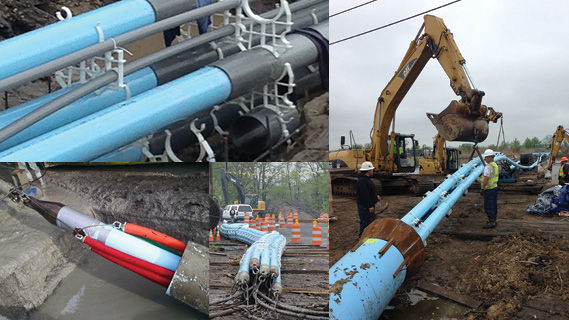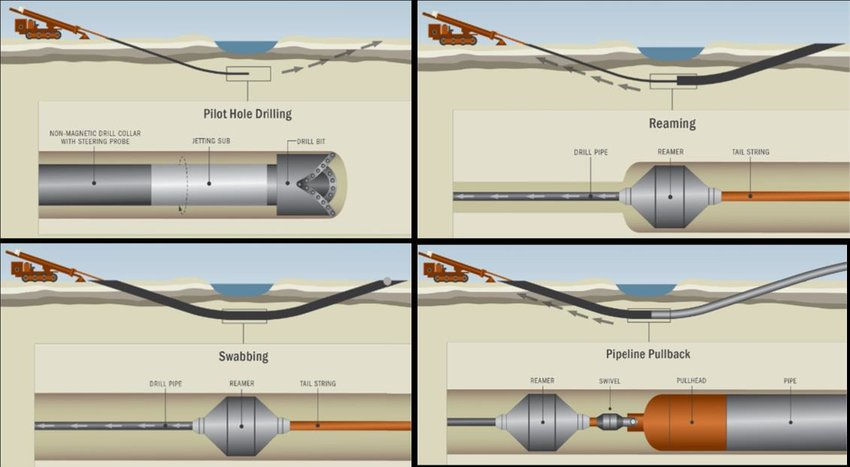Unveiled Do’s and Don’ts in Horizontal Directional Drilling
- Grid Tech
- Jul 9, 2023
- 4 min read
Let’s imagine a world beneath our feet, a hidden web where modern engineering delves into uncharted depths. In this subterranean region, a groundbreaking technology Horizontal direction drilling emerges, revealing a path to conquer the impossible.
It is an innovative technology that allows construction and mining companies to explore the depths of the earth’s surface in a remarkable way. It enables engineers to horizontally maneuver drilling equipment, facilitating the creation of pathways through challenging terrains and the identification of underground deposits. Many companies have embraced this technology as a convenient solution to avoid obstacles like rock formations, ultimately boosting their profits.

Basic Understanding of Horizontal Directional Drilling:
HDD or Horizontal Directional Drilling serves as a trenchless technique for installing subsurface pipelines, wires and service conduit. This process involves precisely drilling along the desired route and then back reaming the appropriate pipe using specialized directional drilling machinery and accompanying accessories.
The entire drilling procedure typically carried out by experienced contractors in this field. It proves particularly useful in areas where trenching is prohibited, such as beneath railways, embankments, roadways, or water bodies like lakes and rivers. Improved HDD steering technology allows for the pipeline installation beneath busy urban streets without disrupting traffic or affecting local businesses.
So, on a simple note, now you can consider the widespread application of horizontal directional drilling in various development project. As a result, the services of directional drilling contractors become crucial. These contractors play an essential role when introducing pipelines or installing communication lines. Project involving gas lines, water lines, oil pipelines and fiber optic cables commonly require the expertise of directional drilling services.
Whether you are a novice or experienced professional, understanding the dos and don’ts of HDD is crucial to ensure successful and safe drilling operations. Today, in this guide, we will walk you through the essential tips and precautions to follow during your HDD projects.

What to Do During HDD Process:
Conduct Thorough Site Surveys: Before starting the underground drilling procedure, all you need to thoroughly survey the project site to easily identify the potential obstacles, utilities, and other underground structures that may affect the drilling process. This information will help you plan the desired drilling path more accurately so that the contractors can avoid costly mistakes.
Choose the Right Equipment: Selecting the appropriate drilling equipment is vital for a successful HDD operation. So, while choosing your drilling rig, drilling fluid and other advanced equipment, consider important factors like ground conditions, pipe size and project requirements. You can consult with experts or other drilling equipment manufacturers to ensure that you have the right tools and machinery for the drilling job.
Prepare a Detailed Drilling Plan: Before commencing the horizontal directional drilling process, develop a comprehensive drilling plan that includes the desired path, entry and exit points, depth and any required steering adjustments. Always look again for any signs of an active utility that the locator might not have picked up along the drill route. Check out for few things like platforms, shaft risers, drops, sewage vent covers, storm drain outlets, meters, utility infrastructure and more.
Always keep in mind that since many states do not mandate that all company owners participate in the one-call system, sewer and water connections are frequently disregarded and left unlabeled.
Prioritize Safety: Safety should always be a top priority in the horizontal directional drilling project. So, it is your utmost duty to ensure that your crew is trained in safety protocols, and provide them with proper personal protective equipment or PPE. Regularly inspect and maintain equipment to avoid accidents or failures during underground drilling process.
Regardless of whether you are drilling through rock to construct a single residence or a private apartment complex, it is considered a business undertaking. It is not uncommon for unforeseen incidents to arise during the drilling process. However, professional directional drilling companies possess extensive experience in handling such situations and are adept at managing them effectively.
Communicate and Collaborate: Effective communication and collaboration between all project stakeholders are essential for a smooth horizontal directional drilling operation. So, always maintain open lines of communication with utility owners, project managers and drilling personnel to address any concerns or challenges that may arise during the project.
What Not to Do During HDD Process:
Neglect Proper Boring Fluid Management: The choice and management of drilling fluids play a crucial role in the horizontal directional drilling projects. So, always avoid using inadequate or improper drilling fluids as they can lead to instability, increased friction and potential damage to the drill string or surrounding environment. Regularly monitor and maintain the drilling fluid properties throughout the project.
Underestimate Ground Conditions: There can be serious repercussions if ground conditions are not adequately assessed and taken into account. Therefore, it is crucial to do a geotechnical examination to comprehend soil compensation, rock formations, groundwater levels and other barriers. Underestimating or ignoring these elements can lead to equipment damage, drilling delays and even project collapse.
Overlook Environmental Considerations: Horizontal directional drilling projects often pass through environmentally sensitive areas. So, failure to adhere to environmental regulations and best practices can lead to legal consequences, fines, and reputational damage. While beginning the project, ensure that you comply with all environmental requirements and take necessary precautions to minimize disturbance to the surrounding ecosystem.
Rush the Pilot Hole: The pilot hole is the initial drilling phase that establishes the drilling path. It is crucial not to rush this stage. Take the necessary time to accurately steer and control the drill head, ensuring that it follows the intended path. Rushing can lead to deviations, encountering obstacles, and costly corrective actions.
Ignore Post-Drilling Inspections: After completing the drilling process, perform thorough post-drilling inspections. Check the integrity of the drilled hole, confirm pipe alignment, and assess any potential damage caused during the drilling. Identifying and addressing issues promptly will prevent future complications.

Conclusion
By adhering to the dos and don'ts of horizontal directional drilling, you can enhance the efficiency, safety, and success of your HDD projects. So, prioritize careful planning, diligent execution, and ongoing communication with all stakeholders. Remember, a well-executed HDD operation not only ensures project success but also contributes to the advancement of trenchless technologies and minimizes disruptions to the environment.


Comments